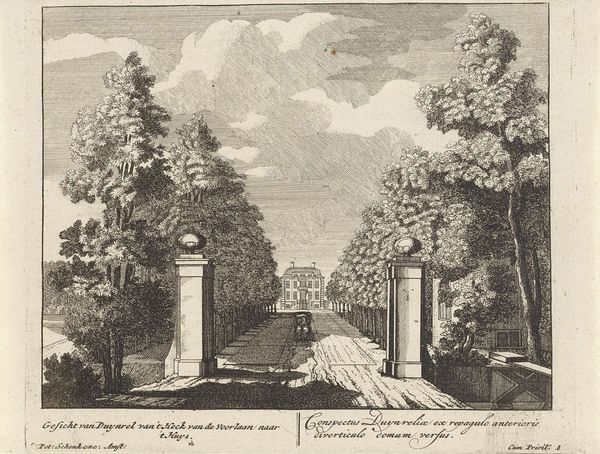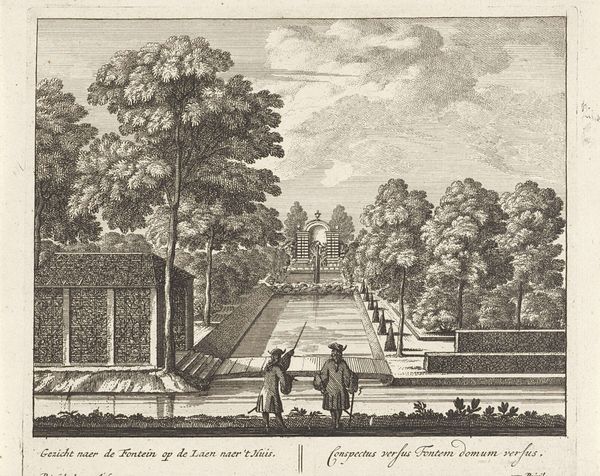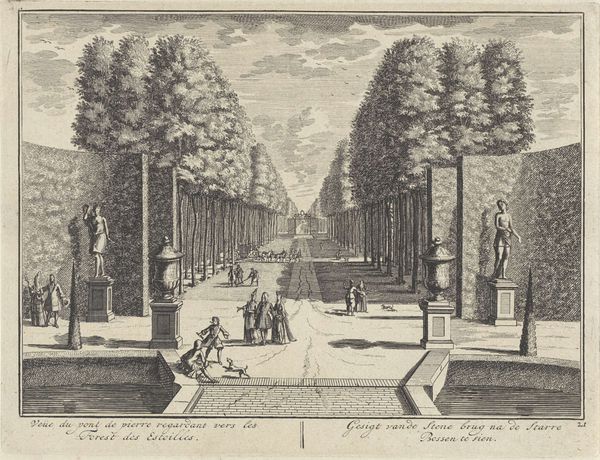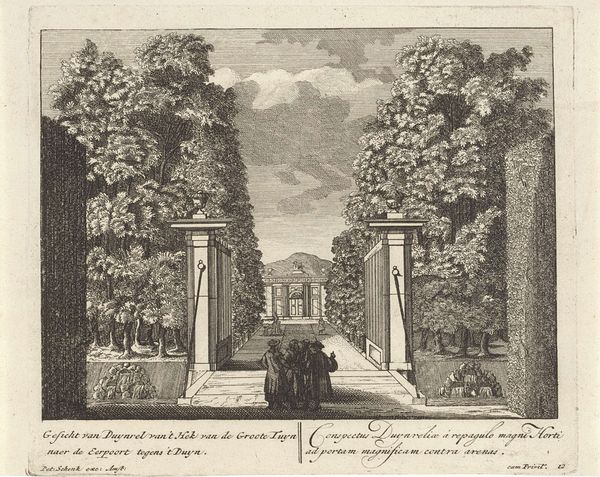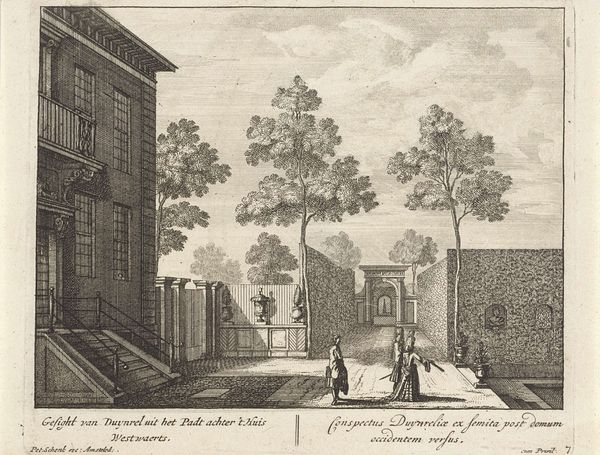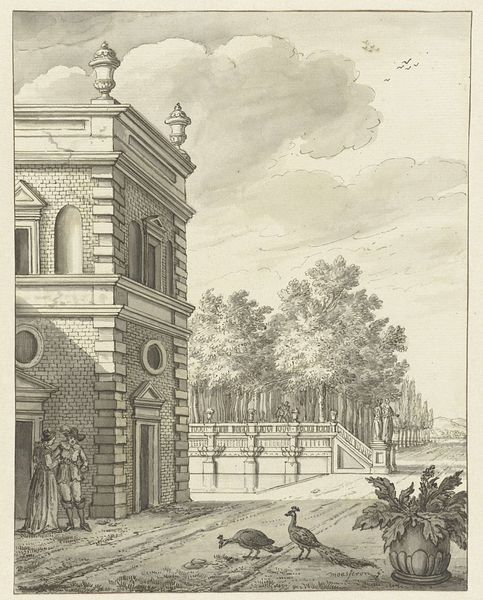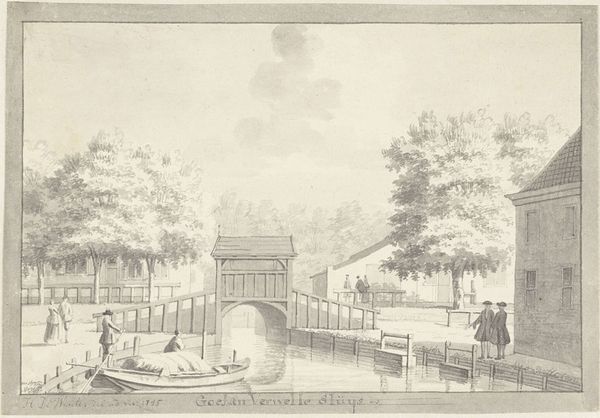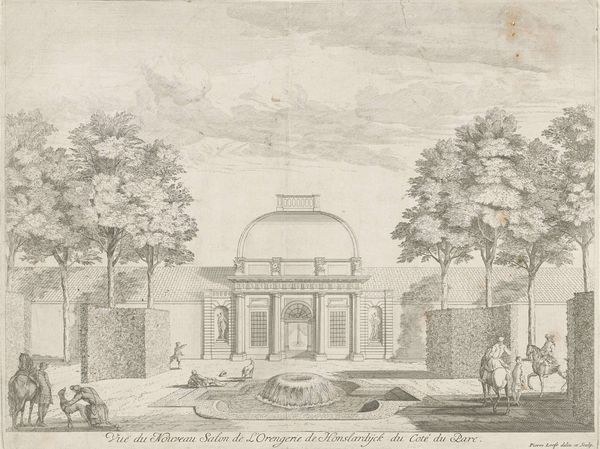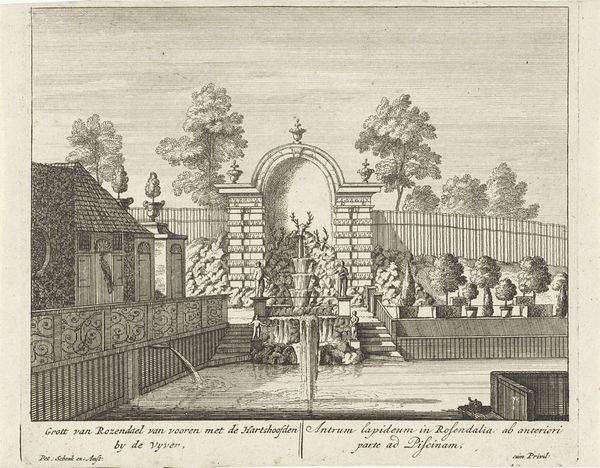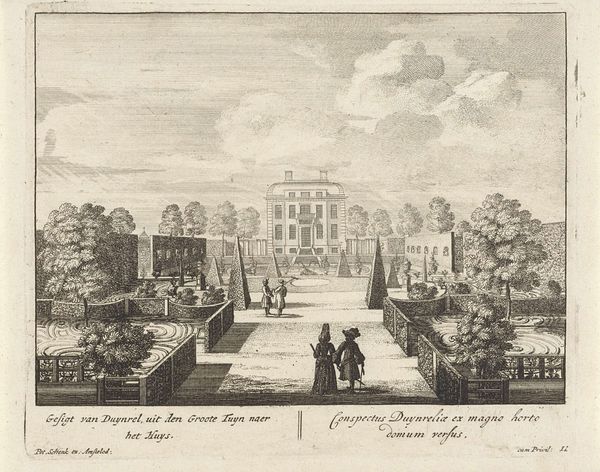
engraving
#
baroque
#
old engraving style
#
landscape
#
cityscape
#
engraving
Dimensions: height 169 mm, width 202 mm
Copyright: Rijks Museum: Open Domain
Curator: This engraving, dating roughly from 1675 to 1711, is titled "Brug bij de ingang Kasteel Rosendael, van opzij gezien"—"Bridge at the Entrance of Rosendael Castle, Seen from the Side." It is currently held at the Rijksmuseum. Editor: It strikes me as a very formal image. Everything is carefully delineated, creating a sense of order and almost restrained prosperity. The sharp contrast between the dark lines and white paper lends the entire piece a stately, measured rhythm. Curator: Precisely. Consider how this perspective shapes our understanding of the landscape. We see the bridge not simply as a functional object, but as a carefully constructed element of a cultivated space designed to reflect the power and sophistication of its patrons. Editor: The bridge itself is obviously the product of considerable labour. We can see the precise brickwork and consider the logistics of its construction. Who built it, what materials were used, and how might the conditions of labour have affected the final product? Curator: That's key. The positioning of the bridge within the broader context of the estate subtly reinforces notions of class and control over both the natural world and the labouring classes who would have made its construction possible. Even the attire of the figures depicted walking hints at social stratification. Editor: Indeed. Looking at this landscape from a materials perspective really underlines the social relations embedded in its production and the control over materials, which is an index to power. This wasn’t found—it was built by specific labor under specific material conditions. Curator: The artist, while anonymous, engages directly with Baroque ideals, emphasizing clarity and a visual vocabulary to convey very specific values related to hierarchy and privilege. This piece not only showcases a landscape, it also affirms certain societal norms. Editor: The detailed execution definitely invites pondering the engraver's skill and the artisanal processes employed. Consider too, the use of the print—perhaps an easily distributed token of power meant for a wider audience? Curator: Perhaps. I am compelled by this print's contribution to the rhetoric of space and place and its capacity to underscore ideas about belonging. Editor: From the standpoint of material analysis and the conditions that forged this picture, this piece makes you meditate on labor and landscape in the creation of an image.
Comments
No comments
Be the first to comment and join the conversation on the ultimate creative platform.
